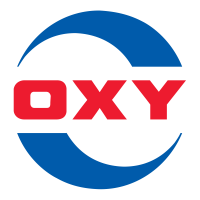
Cognex Corp
NASDAQ:CGNX


| US |

|
Fubotv Inc
NYSE:FUBO
|
Media
|
| US |

|
Bank of America Corp
NYSE:BAC
|
Banking
|
| US |

|
Palantir Technologies Inc
NYSE:PLTR
|
Technology
|
| US |
C
|
C3.ai Inc
NYSE:AI
|
Technology
|
| US |

|
Uber Technologies Inc
NYSE:UBER
|
Road & Rail
|
| CN |

|
NIO Inc
NYSE:NIO
|
Automobiles
|
| US |

|
Fluor Corp
NYSE:FLR
|
Construction
|
| US |

|
Jacobs Engineering Group Inc
NYSE:J
|
Professional Services
|
| US |

|
TopBuild Corp
NYSE:BLD
|
Consumer products
|
| US |

|
Abbott Laboratories
NYSE:ABT
|
Health Care
|
| US |

|
Chevron Corp
NYSE:CVX
|
Energy
|
| US |

|
Occidental Petroleum Corp
NYSE:OXY
|
Energy
|
| US |

|
Matrix Service Co
NASDAQ:MTRX
|
Construction
|
| US |

|
Automatic Data Processing Inc
NASDAQ:ADP
|
Technology
|
| US |

|
Qualcomm Inc
NASDAQ:QCOM
|
Semiconductors
|
| US |

|
Ambarella Inc
NASDAQ:AMBA
|
Semiconductors
|
Utilize notes to systematically review your investment decisions. By reflecting on past outcomes, you can discern effective strategies and identify those that underperformed. This continuous feedback loop enables you to adapt and refine your approach, optimizing for future success.
Each note serves as a learning point, offering insights into your decision-making processes. Over time, you'll accumulate a personalized database of knowledge, enhancing your ability to make informed decisions quickly and effectively.
With a comprehensive record of your investment history at your fingertips, you can compare current opportunities against past experiences. This not only bolsters your confidence but also ensures that each decision is grounded in a well-documented rationale.
Do you really want to delete this note?
This action cannot be undone.

| 52 Week Range |
35.31
52.91
|
| Price Target |
|
We'll email you a reminder when the closing price reaches USD.
Choose the stock you wish to monitor with a price alert.

|
Fubotv Inc
NYSE:FUBO
|
US |

|
Bank of America Corp
NYSE:BAC
|
US |

|
Palantir Technologies Inc
NYSE:PLTR
|
US |
|
C
|
C3.ai Inc
NYSE:AI
|
US |

|
Uber Technologies Inc
NYSE:UBER
|
US |

|
NIO Inc
NYSE:NIO
|
CN |

|
Fluor Corp
NYSE:FLR
|
US |

|
Jacobs Engineering Group Inc
NYSE:J
|
US |

|
TopBuild Corp
NYSE:BLD
|
US |

|
Abbott Laboratories
NYSE:ABT
|
US |

|
Chevron Corp
NYSE:CVX
|
US |

|
Occidental Petroleum Corp
NYSE:OXY
|
US |

|
Matrix Service Co
NASDAQ:MTRX
|
US |

|
Automatic Data Processing Inc
NASDAQ:ADP
|
US |

|
Qualcomm Inc
NASDAQ:QCOM
|
US |

|
Ambarella Inc
NASDAQ:AMBA
|
US |
This alert will be permanently deleted.
 Cognex Corp
Cognex Corp
Earnings Call Analysis
 Q2-2024 Analysis
Cognex Corp
Q2-2024 Analysis
Cognex Corp
Cognex posted a revenue of $239 million for the second quarter of 2024, which aligned with the forecasts mentioned earlier. When we exclude the impact of Moritex, revenue saw a 7% year-on-year decline, primarily due to the continued softness in their factory automation sector. Their adjusted gross margin was pegged at 70.3%, a drop from 74.3% last year, influenced by the Moritex acquisition and a weakening of sales in the consumer electronics segment. Despite the challenges, there was a sequential improvement in adjusted EBITDA margins, showcasing effective cost management and operational leverage.
The report provides a nuanced view of the performance across various market segments. The logistics sector is the current highlight, with double-digit growth expected to continue in the latter half of the year. However, the automotive industry, particularly in Europe, has been faltering, with noticeable declines in the broader automotive sector and EV battery projects. The consumer electronics market remains tempered with subdued investment expectations for 2024. Conversely, the semiconductor sector is regaining momentum. Cognex has recorded a notable upswing in this area, spurred by increased investments in high-bandwidth memory to support AI growth.
Cognex’s strategic initiatives are central to its current narrative. The emphasis on emerging customer initiatives plays a pivotal role, with increased investment reflected in their operating expenses. This focus has started to yield positive customer engagement, despite a slower than anticipated revenue ramp-up. The introduction of AI-driven products like the In-Sight L38 has seen substantial customer acceptance. Additionally, their acquisition of Moritex stands out as a success story, with positive financial and operational synergy realized.
For Q3 2024, Cognex forecasts revenue ranging from $225 million to $240 million. This guidance reflects a consistent pattern of softness in the broader factory automation business but stable conditions in selective end markets. An interesting point to note is the expected revenue contribution from the Moritex business, ranging from 10% to 12%, owing to an additional month of financials from this segment, higher than the typical 6% to 8%. The adjusted gross margin for the next quarter is anticipated to be slightly below 70%, with Moritex contributing a 3 percentage point impact. Adjusted EBITDA margins for Q3 are projected to be between 16% to 19%.
Cognex’s strategic focus lies in driving profitability and aligning operating margins towards a long-term target of 30%. The CFO has emphasized three key priorities: driving profitability through rationalized costs, optimizing capital efficiency, and enhancing investor communication. The planned Investor Day in the first half of 2025 is aimed at detailing the path to achieving these long-term financial goals. Despite a challenging environment, Cognex remains optimistic, driven by positive trends in the logistics and semiconductor sectors, and a robust product innovation strategy infused with AI capabilities.






 You don't have any saved screeners yet
You don't have any saved screeners yet

Greetings. Welcome to the Cognex Second Quarter 2024 Earnings Conference Call. [Operator Instructions] I will now turn the conference over to your host, Nathan McCurren, Head of Investor Relations. You may begin.
Thank you, operator. Good morning, everyone, and thank you for joining us. Our press release was published yesterday after market closed, and our quarterly report on Form 10-Q for Q2 2024 was filed this morning. The press release, earnings presentation and 10-Q are available on the Investor Relations section of our website. Both our published materials and the call today will reference non-GAAP measures. You can find a reconciliation of certain items from GAAP to non-GAAP in our press release and earnings presentation.
Any forward-looking statements we made in the press release, the accompanying presentation posted to our website or any that we may make during this call are based upon information that we believe to be true as of today. Our actual results may differ from our projections due to the risks and uncertainties that are described in our SEC filings, including our most recent Form 10-K and Form 10-Q.
On today's call, Rob Willett, Cognex's President and CEO, will discuss end market trends and provide an update on our strategic initiatives. Dennis Fehr, Cognex's CFO, will discuss our second quarter financial results, and we'll conclude with our outlook.
With that, I'll turn the call over to Rob.
Thanks, Nathan. Hello, everyone, and thank you for joining us. In the second quarter, we delivered revenue and gross margin in line with our guidance. Revenue increased sequentially driven by typical consumer electronics seasonality. Excluding Moritex, revenue was down year-on-year in total and across most of our factory automation end markets. This reflects a business environment that remains challenging, but stable.
Operating expenses were favorable to expectations and contributed to a sequential adjusted EBITDA margin increase of 8 percentage points. This increase demonstrates the leverage our business delivers on incremental revenue and our continued focus on cost management.
Earlier in the year, we were encouraged by positive signals in macro leading indicators, notably favorable PMI readings in March, while we also noted that EV demand remained uncertain. However, macro sentiment has now declined again, and we have seen additional delays and reductions in EV projects.
While most of our manufacturing customers remain cautious with their CapEx investment, positive momentum continues to build in logistics and semi. In Q2, we continued to execute against our strategic initiatives. We drove innovation by incorporating AI into more of our products, and we continue to grow our emerging customer initiative. I now want to provide you with an update on our product innovation.
We are focused on infusing new AI into all our product launches to drive adoption by more customers. Early in the second quarter, we expanded the application of our edge learning technology by launching the In-Sight L38, the world's first AI-enabled 3D industrial vision system. This product, which we introduced to you on our last call, has been very well received by customers with a win rate over 2x higher than our previous 3D offering.
We also launched our new Modular Vision Tunnel, which introduces AI into logistics tunnel reading. The speed, power and AI-assisted decoding of this new tunnel contributes significantly to its industry-leading performance. Within our ID products, we have enhanced the setup and tuning process for our DataMan barcode readers by using AI and ensuring great results. Our added tuning functionality selects the best parameters to optimize read rates. We're now using AI to help our customers by auto tuning the best settings for light exposure filters and dynamic range, which come together in combination to read barcodes more effectively.
We've also launched new apps that bring additional capabilities to our In-Sight SnAPP sensor. We recently introduced a new counting app, which counts subjects using AI even in highly chaotic themes. For example, the tool can count how many screws are in a pile of screws, nuts and other objects. This task previously required linking many tools together using complex programming which limited its use to sophisticated engineers.
As we continue to execute our AI-driven product strategy, we will incorporate AI into more products, making them easier to use and able to solve applications in a more intuitive and human-like way. To reach a broader customer base with our latest technology, we continue to invest in our emerging customer initiative. Our 2023 cohort of emerging customer sales noise has driven strong customer activity in the first half of the year, and is on target to meet or exceed 80,000 customer visits in 2024. This activity has resulted in steadily increasing monthly bookings through the first half of the year. We're pleased to see them getting traction as they're calling on and winning large numbers of new customers.
In addition to selling our easier-to-use products, our emerging customer sales noise are generating strong referrals for our more sophisticated vision products, leading to new opportunities for our account sales engineers. While we are pleased with the activity and the funnel creation we're seeing from our emerging customer team, this initiative is focused on factory automation customers who are in end markets where we are seeing prolonged macro softness. This market softness is impacting sales more than we had anticipated. So we now expect it will take longer for the first cohort of emerging customer sales noise to deliver incremental revenue of $50 million.
While the revenue ramp on this initiative is taking longer, our emerging customer team continues to steadily increase monthly bookings, and we remain confident that the high level of activity we're seeing will deliver increasing levels of success. The orders we are seeing reinforce our confidence in this initiative being gross margin accretive to our mid-70s target.
We are continuing to execute on our emerging customer initiatives. Our 2024 cohort of trainees is now in training and will enter the field at the start of 2025.
Turning now to what we're seeing across our end markets, which you will find on Slide 6 of the earnings presentation, I will discuss the end market results, excluding the contribution of Moritex. End markets have been mixed as we have seen both continued weakness as well as pockets of accelerated growth. Starting with Automotive. Revenue was down both year-on-year and sequentially. We continue to see delays and scaling back of EV battery projects, which led to a revenue decline year-on-year in the second quarter.
Additionally, we saw a further step down in our broader automotive business, particularly in Europe. We are seeing more tentativeness from auto customers driven by concern around near-term end demand and political uncertainty. While we have seen a slowdown in greenfield and discretionary productivity projects, we still see our baseline of maintenance and product upgrades on existing lines. We also continue to expect our EV battery business to be a growth driver over the long term.
Moving on to Logistics. In the first half of the year, Logistics achieved strong double-digit revenue growth year-on-year, and we expect growth to continue in the back half of the year. We saw growth across this business, including large e-commerce customers, parcel and post customers and across our base logistics business globally. We believe logistics is well positioned to grow as automation penetration increases and e-commerce investment returns. Consumer electronics revenue was down year-on-year. Q2 of 2023 included $15 million of revenue that shifted forward from Q3. This year, we again expect consumer electronics revenue to be more heavily weighted to Q2 but to a lesser extent than in 2023.
Consumer electronics has positive long-term trends, but we continue to have tempered expectation for investment in 2024. Semi had strong momentum in the quarter with significant year-on-year growth. Coming off a down year in 2023, we're now seeing strong growth. Customers are making significant investments in high-bandwidth memory to support growth in AI. We're optimistic over the long term that we can see a strong return to growth in Semi as projects to localize chip production and to further support big AI investments reach the automation phase.
Let me now hand it over to Dennis to walk you through more of the financial results and the outlook for the third quarter.
Thank you, Rob. I will walk through our financial highlights, which you can see on Page 7 of our earnings presentation posted to the website. Second quarter revenue of $239 million declined in line with guidance by 1% year-on-year, including a contribution from Moritex of 7% of total revenue. Excluding Moritex and a 1% foreign exchange headwind, revenue declined 7%. From a geographic viewpoint, excluding Moritex, year-on-year revenue growth was mostly stable across all regions except China, which declined for the seventh consecutive quarter.
Americas grew slightly in the quarter, driven by strong performance in Logistics. Outside of Logistics, the broader factory automation business experienced continued softness, leading to slight declines in Europe and other Asia, excluding China. Turning to margins. Adjusted gross margin was 70.3% in Q2, in line with guidance and down from 74.3% a year ago. Gross margin included a 2 percentage point dilution effect from Moritex. There was also a negative mix impact due to the strength in Logistics and lower consumer electronics revenue.
Sequentially, adjusted gross margin increased, given the 1.6 percentage points of unfavorable onetime events in the first quarter from the strategic logistics project with long-term higher-margin recurring revenue. Adjusted operating expenses increased 8% year-on-year and were flat sequentially, which was favorable to our guidance. The year-on-year increase was driven by Moritex, increased investment in our emerging customer initiative and the headwind in incentive compensation from a lower bonus achievement accrual in 2023.
We remain very disciplined on cost management in the current business environment. Excluding Moritex and emerging customer initiative, this cost optimization resulted in a 1% year-on-year reduction in adjusted OpEx despite incentive compensation headwinds. Adjusted EBITDA margin was 19.9% in Q2, down from 28.1% a year ago. This was driven by a lower gross margin and the higher investment in emerging customers, partially offset by the positive contribution of the Moritex acquisition, which remained accretive to adjusted EBITDA margin.
Adjusted EBITDA margin increased by over 8 percentage points sequentially, driven by the seasonal 14% increase in revenue and flat OpEx. This over 60% incremental EBITDA margin demonstrates how quickly our margins can ramp with revenue growth while actively managing costs. Diluted earnings per share on a GAAP basis was $0.21, down year-on-year due to lower operating margins and higher acquisition and amortization costs. Sequentially, GAAP-diluted EPS increased 200%, adjusted diluted EPS was $0.23, down $0.10 year-on-year and up $0.11 sequentially.
The adjusted effective tax rate was 15% in both Q2 2024 and Q2 of '23. Turning to the balance sheet. Cognex continues to have a strong cash position with $555 million in cash and investments and no debt. Free cash flow in Q2 was $23 million compared to $25 million a year ago, reflecting lower GAAP net income, partially offset by lower working capital investment. We returned $23 million to shareholders in the form of stock buybacks and dividends.
I will now turn to our outlook for the third quarter. In the third quarter, we expect revenue between $225 million and $240 million. This range reflects a soft but stable market backdrop, with strength in select end markets but continuous weakness in our broader factory automation business. It also includes a slight step down sequentially, driven by seasonal consumer electronics revenue more heavily weighted to Q2 this year.
I will remind you that last year, $50 million of consumer electronics revenue that we originally expected in the third quarter of 2023 shifted into Q2. We expect the Moritex business to contribute 10% to 12% of revenue in Q3. This is higher than the typical 6% to 8% of revenue as Q3 will include an extra month of Moritex financial. This is a catch-up as we have reported Moritex on a 1-month lag as we integrate the business.
Our Q4 2023 financials included only 6 weeks of Moritex results despite Cognex owning the business for about 10 weeks. After Q3 2024, Moritex will be on the same close schedule as the rest of Cognex. Adjusting for the timing of consumer electronics revenue in 2023 and excluding Moritex, revenue is expected to be flat to slightly down year-on-year.
For the third quarter, we expect adjusted gross margin of slightly below 70%. The gross margin impact of Moritex is expected to be approximately 3 percentage points in the quarter due to the additional month of financials. Excluding this 1 time catchup, adjusted gross margin would be down slightly sequentially, driven by the seasonal step-down in consumer electronics revenue. As we discussed previously, we expect an incremental $25 million of emerging customer OpEx for the full year, which is ramping throughout 2024 similar to the investment made in 2023.
Historically, we have provided guidance on our operating expense in the upcoming quarter. To increase clarity and to better reflect our focus on the bottom line, instead we'll begin guiding to adjusted EBITDA margin. We expect adjusted EBITDA margin between 16% and 19%. The midpoint of this range is in line with the prior year, which reflects positive operating leverage on higher revenue and strict cost management, offset by additional investment in the emerging customer initiatives and incentive comp headwinds.
I would now like to take some time to touch on a few key areas I've identified, and will be focusing on to drive long-term value creation at Cognex. Toward my first 90 days as CFO, I've completed a solid 360-degree view of the company, gathering a large amount of feedback from customers, employees and shareholders. I've combined this feedback, its rough strategic direction for the company and 3 main priorities have emerged.
The first is driving profitability and guiding adjusting operating margins back towards our long-term target of over 30%. As CFO, I will be focused on supporting long-term revenue growth by championing initiatives to rationalize cost. Second, there is an opportunity to increase our capital efficiency through optimizing the working capital needs of the business and to refine our capital allocation strategy. Lastly, I will continue to prioritize enhancing our investor communication. We will be planning an Investor Day in the first half of 2025, with the primary objective of clearly messaging our path to achieve our long-term financial framework.
I am excited about the point in time at which I'm joining Cognex. While we are operating in a challenging but stable business environment, we are encouraged by the positive momentum in Logistics, and we believe the progress we are making on our strategic initiatives keeps us well positioned to capitalize on exciting industry trends when the operating environment improves more broadly.
Now we will open the call for questions. Operator, please go ahead.
[Operator Instructions] Our first question comes from the line of Andrew Buscaglia with BNP Paribas.
So I just wanted to first ask on -- with the emerging customer initiative. Some of the conversations with customers, with customers you're having that informs you guys pushing out that expectations for revenue this year. And again, just to reiterate, you're expecting $25 million now in 2025? And can you maybe talk about how that splits between Q3 and Q4?
Okay. So just to level set, I think your second point relates to cost, right? I'll let Dennis speak to that. I think your -- the first part of your question really relates to current demand. And we're seeing really nice traction in terms of getting the team out into the field and the activity that they're seeing. But we are seeing a softness in some of the end markets that they're serving. So this is kind of a period of prolonged macro softness that we've seen in factory automation in general. So we now expect it will take longer for the first cohort of emerging customer sales noise to deliver the incremental revenue of $50 million that we spoke about.
Specifically, automotive and packaging end markets such as consumer products, food and beverage, it tends to be pretty highly correlated with the macro leading indicators like PMI and those have kind of remained persistently low there. They're stable, but they're softer than we expected. So as our team is going out there, really pleased with the activity that we're seeing. We're just seeing a slowness in spend among those customers that's slower than we had anticipated.
On the OpEx side, we continue to see a $25 million increase year-over-year, that is unchanged to what we have said previously. The $25 million is ramping throughout the year, right? So as we're bringing on the next cohort, the ramp-up of the OpEx was weighted towards the second half of the year. And so in that regard, you can model that some increase throughout the quarters.
Okay. And then maybe just turning to some of the end markets. It sounds like maybe consumer electronics a little bit weaker than you thought versus 3 months ago. Can you talk about what changed there? And then any expectations in 2025 around device upgrades may be helping influence some volumes there?
Yes. So I think the overall sense would be this more uncertainty in consumer electronics, that is our observation. Some context following what was a 31% decline in 2023, consumer electronics remains soft with slow end user demand and particular weakness in China. We've tempered expectations for consumer electronics in 2024. And we still have certain uncertainty around project size and timing.
Our customers remain cautious with investment in productivity initiatives to automate manual inspection tasks. And we expect limited investment in 2024 from customers planning to invest capital to diversify their supply chains. So all of those factors, I would say, kind of are probably underlying what seems like kind of continued softness in that market that hasn't returned to the strong growth we expect to see at some point going forward.
On that note, analysts forecast, weak CapEx forecast this year for the important players who are our large customers, and they are more optimistic about 2025. I would point that out. I think 1 dynamic of note is that among the large share smartphone players, one that has gained share is one that we are not allowed to sell to for regulatory reasons. And I'd also just point out that the weakness that we see in our electronics business is broad-based, is not focused on 1 customer or region.
Our next question comes from the line of Tommy Moll with Stephens Inc.
Rob, I wanted to start on Logistics. It sounds like the positive trends there are fairly broad-based. I was particularly interested in the e-commerce cycle where it seems like maybe we've turned a corner. But to the extent you can give more insight, that would be helpful, particularly just any momentum that may be gathering there as the year has progressed?
Yes, thanks. Certainly, Logistics is a bright spot for us. I think we've seen all of this on the last conference call, and that has continued to strengthen now as we look out. And the positive signs we're seeing are pretty broad-based not just in e-commerce and not necessarily specific to a big customer or the base. We're just seeing all of it is up materially now, was in the second quarter. And it grew -- Logistics grew strong double digits in the first half of 2024, and we expect the business to continue to grow in the second half.
New customer activity is strong, with many of these customers having the potential to become large contributors over time. And our customers are beginning to embrace vision technology and edge intelligence, the technology that allows them to manage the data coming out of our vision systems to provide them with much more knowledge about the operating environment. And we're doing a nice job of further penetrating the parcel and post sector.
That's a market we're targeting for growth, and it's going to be a long road because those specifications go out and you win them and sometimes it can be 2 years later that the revenue starts to come in. But we're pleased with our progress winning the specification, some of the larger players in parcel and post.
I also talked in the opening announcement about our modular vision tunnels, which really are allowing that business to deploy for large customers -- for customers larger tunnels more quickly, more scalably, more efficiently and bring in new technology and features into that part of the market very quickly. So yes, we're -- it's broad-based. It's not just e-commerce, it's not just large or small customers, it's pretty global overall, and we're making nice progress penetrating parcel and post. So we're feeling good.
Let me add to that. Just from a revenue recognition timing. Keep in mind that Logistics is a project-based business and is much less a book-to-ship business. So therefore, expect from the P&L perspective, just to be more lumpy in the P&L and also that there is some timing difference between bookings and revenue.
As a follow-up, I wanted to circle back on, Rob, your commentary regarding the base auto business. Sounds like the bulk of the weakness maybe in Europe, but if you can just give us any context on the European versus U.S. trends there? And again, what some of the drivers are on the base side?
Yes. So Automotive in 2023 was our best-performing market. It did decline, but only mid-single digits. And it's declined more year-on-year in the first half of '24 than it did last year. And the weakness is across traditional ICE business and EV battery, with EV battery really being, I would say, the most kind of disappointing for us or slowest in terms of what has been our biggest decline.
We still -- we add a lot of value to EV battery production, but the end demand from customers is not there around a lot of uncertainty in the near term. Auto is a cyclical end market. It grew nicely in '21 and '22. And in addition, some of the big players can drive some of the plans on investment. In terms of your question on sort of regional, I would say we definitely see softness in China. That's certainly one of the big areas of softness we see. And we -- and Europe also is looking weaker on the automotive side. So those are the 2 pockets of weakness, I would certainly point out to in addition to EV battery.
Our next question comes from the line of Joe Giordano with Cowen and Company.
This is Michael on for Joe. Just provide some color on the end markets, but could you just like on a solid basis, particularly on like the auto side and consumer electronics, what's based baked into guidance for the year from a growth perspective?
Generally, we don't give full year guidance and certainly not by end market. I think if I was to sort of point you in trying to understand some of those markets, certainly on automotive, I think we look to PMI, we look to CapEx spending kind of reducing in that area. We look to some of the project cancellations that we're seeing, particularly around EV. So things and some of those are the leading indicators that we definitely see manifest in our customers and our sales funnel.
Concerning consumer electronics, I think I spoke a little bit about that in the first answer, but I would -- I think if we look at the CapEx plans that our larger customers have, analysts will forecast weak CapEx forecast this year, but I'm more optimistic about next year. So I would look to that.
Right. And then in general, maybe think really that automotive is overall the softest market, which we're in and seeing the most headwinds overall there. I think on the consumer electronics, I want to repoint to the topic that at the moment, we see that uncertainty in terms of project size and timing. Therefore, we have rather [indiscernible] expectation on that side for this year. There's a more positive outlook in 2025 based on analyst reports.
That's helpful. And just one more, if I may. You're guiding gross margin slightly below 70% or so for next quarter, how much of that is attributed to the more tax dilution? I'm just curious, you had mentioned mix and sort of the press release as a headwind. Any color there would be great.
Yes, happy to take that. So overall, all right, with the additional month of Moritex included in the Q3 financials, we're seeing a 3% dilution effect from Moritex versus our typical 2% dilution impact. On that regard really the large share of that step down is driven by Moritex. But certainly also there is also the revenue step down in consumer electronics from the second quarter into the third quarter. And therefore, there is also a negative mix effect happening on that side.
Our next question comes from the line of Piyush Avasthy with Citi.
Rob, I want to go back to the emerging customer initiative. You guys talked about a slower softer ramp in bookings revenue. Maybe drill down a bit more. I think we understand the end market dynamics. But is it all that? Or has it been a challenge to push pricing as well? I'm assuming as you reduce the complexity of your products, there could be products from less sophisticated competitors at a lower price point? Do you see that as a challenge? Or it's just basically end market dynamics?
I don't see that as a challenge at all. No, no. I think it's probably a truism that smaller customers generally pay higher prices. They have less negotiating ability. I know I said we talked that this initiative, we expect it to be gross margin accretive. And -- so that's not -- no, that's not a challenge. The challenge is really just about spending habits at many, many customers they're going to.
And I think it might tell us something about spending at smaller customers, which is primarily where these sales points are calling. And just not seeing the funnel convert as quickly as we would expect, and it's a phenomenon we see broadly, not just among our emerging customer players at the smaller accounts or the larger accounts.
In general, I would say [indiscernible] smaller OpEx, smaller CapEx projects are moving forward. But with mid-size to larger CapEx projects is basically where customers are very tentative at this moment.
Got it. Helpful. And from a geographic perspective, helpful comments on 2Q. In context of your 3Q guidance, are you expecting similar trends as 2Q? Like I think there is some seasonality, but other than that, any region where you are more or less concerned?
I mean, in general, we have been talking about that [indiscernible] seventh consecutive quarter in China being down. And I think, in general, I think we see that trend to be continuing. In that regard in terms of the regional allocation, I would say, China, Europe, Rob pointed to that, especially on the automotive side are the 2 areas which are trend to the weaker side. But then Americas, basically on a better path.
Our next question comes from the line of Jacob Levinson with Melius Research.
I know Medical is a market that doesn't get a lot of airtime usually, but I'm just curious if you can help us understand the drivers there? And I know certain parts of that world have been -- have had some COVID, post-COVID headwinds, but is what you're seeing there really more a function of higher rates? And also, if you can just remind us of the size of that business as well, that would be helpful.
Yes. I'll start out there. We know what we're seeing in that market, we're seeing slower spending in that market too. And I think what we -- and I note other players in that market are seeing is very large inventories that were built up at customers during COVID that are being depleted over time. So I think that's what's causing that market to be down.
We have good positions with some of the larger medical players, and we're happy with our win rates in those areas. And then we're having design wins still in our Life Science business. But the underlying rate of demand in that market continues to be low.
And then maybe in terms of the overall market strength or market ratio, right? So we include that in -- this is what we call the others. So it's part of that share. And I would say there are several markets included in that others and the medical pharmaceutical doesn't take out specific size compared to other markets in this other bucket.
Okay. That's helpful. And then just on a different topic and with Moritex and you've had that deal under your belt for a few quarters now. And if I recall correctly, some -- it's partly at least a play on the Japanese market and trying to expand your position there, but maybe you can just walk us through the puts and takes of the deal so far. And if it's tracking to your expectation?
Yes. We're pleased with how that acquisition is going with the asset that we bought. And the progress we're making. We generally don't speak to the performance of the business product line, but I can confirm that the investment thesis we had when acquiring the company is well supported. The business has a significant portion of its revenue within semi and consumer electronics. So certainly, the semi side is helping, and it's really building our -- the percentage of our business that's exposed to semi, which we're feeling positive about that market and what we're seeing in it going forward.
The integration is going well. And to your point, we're excited about the experienced management we've acquired, who are now leading the integrated business of Moritex and Cognex in Japan. So we have that. We see significant revenue synergy opportunities. And right now, we're executing very well on that with the Cognex sales force selling the Moritex products and more of them in the pipeline to come. And cost synergies are right where we expected them to be or a little bit better.
So overall, we're positive there. I would also add the -- we're very pleased with the quality of engineering that we've acquired with Moritex, really, just world-class optics people who are able to accelerate some of our product lines, our product introductions around optics. So overall, yes, we're very positive.
Yes, same here, we control from my side stepping into the role and taking a fresh look at the deal, I think, very positive deal economics. Very positive in terms of performance against the original metrics and deal assumptions, which we have good progress on the integration side. So overall it's really a nice success story.
Our next question comes from the line of James Ricchiuti with Needham & Company.
Does the relative contribution of the Moritex business increase for the year, just as it relates to the overall weakness you're seeing and the broader factory automation business. You've given -- earlier in the year, you gave some sense as to what it could represent of revenues. It sounds like it potentially could be a little higher than that?
I mean, in general, I think what we see right particularly for Q2, Q3 due to this integration reason to catch-up on the closed schedules that the Moritex revenue was higher than what we would typically expect. Overall, the -- as we just mentioned, the Moritex performance is really in times of what we expected, and we feel very positive about that. I wouldn't say so that in general, I think it's kind of increasing the overall perspective on the revenue contribution or the share of the overall business.
And just pivoting to the emerging customer initiative. So originally, you had thought, Rob, I guess, that it could add as much as $50 million of incremental revenue. When you were thinking about that kind of target, how back-half weighted was that? And are you making any changes in the way you're thinking about this initiative as well as the timing of when the next group of salespeople come online?
Well, we're still in the early stages of this program, right? This is a multiyear initiative to really take our edge learning technology, particularly, which is kind of world-class to customers who can benefit from this. So I think if -- let's start with that context, we've said we serve about 30,000 customers. And there are more than 200,000 customers who are now addressable with the edge learning technology products like our In-Sight 2800 series.
And so this team is coming in to sell those products, and we're pretty excited about the pipeline we have and then more products we can have them sell over time. Now they joined us about a year ago, and they trained and then they entered the field at the start of last year in Q1, and they're ramping nicely. Every month, they're selling more and they're achieving what we expect in terms of customer visits. So we've said to meet or exceed 80,000 customer business this year.
So all that is looking good. And we expect them to ramp quarter-on-quarter as we keep going here. And that's certainly borne out with what we see now. The challenge we're seeing is that the end markets are a little less responsive to them than we have expected. But we're not dissuaded by that at all. We're very, very positive about when those accounts spend, we're going to see the benefit from it. We have recruited the second cost, right? And they're pretty much all here. And I think maybe a few have yet to stop.
But -- so it's basically -- the second large cohort is in training. We're excited about the products and they're getting trained on. And we're learning. We're learning through this process. We're learning about how to manage them, how to deploy them, how to train them. And so we expect learning curve effects from that as we keep going. And that's really everything going to plan, I would say, in that regard. It really is just a matter of end-use demand we're seeing at some of these customers.
I would also say they are signing up lots of new customers every month, which is a great -- that's a great metric. That's where we headed out to start for us. So happy to see that kind of level of penetration going on, and it's increasing every month also.
And then just on the -- from the revenue ramp. Originally, we saw definitely that it is -- this initiative will ramp throughout the year, and that's what we are still seeing in terms of the bookings that basically month-over-month, we are seeing an increase in the bookings. But as kind of the macro softness is out there, that certainly kind of shifting that rent rate more to the right, and that will basically impact how we think about the second half of the year in terms of booking and revenue generated from this initiative.
Maybe one other area we look at closely is this team obviously is calling on new customers, and they're finding opportunities for our more sophisticated products. So certainly, part of the benefits that they bring to Cognex is only extra opportunities they bring to our account sales engineers, and that's also going well in terms of what we're seeing there sort of an additional marketing arm for us in many respects.
Is this effort mainly in the Americas? Or how would those compare to the rest of the business geographically? Or is it as broad an effort?
Well, it's a global initiative, right? So we have emerging customer sales noise in all of our major regions, Asia, Europe and America. And yes, so I think it's broadly in line with that is how to think about it. We don't want to disclose specific markets just for competitive reasons.
Our next question comes from the line of Guy Hardwick with Freedom Capital Markets.
Robert, I'm just wondering, you referenced analyst forecast for electronics company CapEx to explain why consumer electronics was down year-on-year. But what about semis? Because analysts forecast still forecast semi CapEx down to say low-single digits last year, I have to say double digits down last year. But Cognex seems to be bucking that trend, and you said a strong growth in semi. So can you explain which region or any particular type of customers, which are growing strongly?
Yes, thanks. So semi business is doing well, grew meaningfully year-on-year. It's grown over 2x over our long-term growth target for this business. So we're -- for our business. So we're happy about how that's going. I think I would point to a number of areas to answer your question. One is kind of high-bandwidth memory, which is really essential to all the trip production plans for these big data centers that are getting built out of large language models and AI. So I think we're certainly benefiting from exposure to those customers.
Remember, we are the most sophisticated vision, industrial vision company in the world. So the most sophisticated customer is deploying them. We're likely to being more weighted to that type of exposure. And yes. I think otherwise, it's pretty global in nature. We're seeing improvement in all our regions as we look at that. I would also point though, the second point would be, we've been hearing for a long time, right, that investments to globalize and diversify the semi supply chain are underway, right?
And so you may be hearing that plants are being built in various geographies. And generally, vision and automation are part of it anyway is getting specced pretty near the end of that time, right? So you're likely to see our business is going to be benefiting as new plants are starting to come online and the last parts of the capital is being deployed. So that might account for some of the difference in timing and what the CapEx forecast that the industry might say, and what you might see from us.
Our customers tend to be some of the most famous OEMs and machine builders in that industry, right? So certainly, as we tend to benefit as they see their demand grow. And that's kind of how -- what we would tend to look at in terms of what's going on in that market.
And just a quick follow-up, if I may. Just Robert, just wondering how you're feeling about that greater than 75% gross margin from ECI revenues? And obviously, it's accretive, but what is kind of the guardrails around that? Why can't it be higher? Why not 80%, given it's all direct, and it's largely to small- and medium-sized customers. Can you give us kind of a sense of can that change either way going forward?
We feel good about it. We said we expect it to be accretive to the 75% gross margin. There are certainly products that they sell that are higher gross margin than that. And then there are some competitive areas more like simple barcode reading, which can tend to drag gross margins down. But overall, we're very positive about the gross margin impact of the emerging customer initiative on Cognex with those direct sales of particularly AI products, which are amazing technology and command high gross margins.
Our next question comes from the line of Keith Housum with Northcoast Research.
Dennis, and welcome on board. In terms of your priorities here going forward, you mentioned returning to the 30% operating margins. Is there any I guess, low hanging fruit that you're seeing on the cost side that perhaps can accelerate your move there over the next, say, 3 to 6 months?
Yes, thanks. In general, I think we started already in this quarter, but also kind of over the last 12 months or so to really put a tight look to all OpEx outside of the emerging customer initiatives. In that regard, we will continue down this path. And maybe to give you a bit more sense that means we're looking both on the discretionary side, but also kind of looking at areas where we can reduce headcount. And we'll continue to doing. So that means we reduced OpEx year-on-year, 1% despite incentive comp headwinds, right?
I just want to remind that we have $15 million to $20 million of incentive comp headwind in this year resulting from the lower bonus accrual last year. And obviously, we will continue to drive on the OpEx side. I would, however, really say like cost management is an important lever, but no doubt the strongest lever which we have to return to the greater than 30% is on the volume side, right? I think it's very clearly the business living from leverage as we have seen kind of in the sequential increase from the first quarter into the second quarter, and the cost management is really supporting of that. And therefore, we look really at profitable growth, and it's not just through cost management, but it's an important aspect.
Great. I appreciate that. Just as a follow-up or a second question here. Any change in the competitive environment over the past several months that is contributing to some of the headwinds that we're seeing here over the next rest of the year?
I would say in general, the answer to that question is no. But in terms of competition, as you look at our competitors, some of them are very different than us in terms of we compete with a small part of their business, and they would sell other things like microscopes and PLCs. If there's any kind of change that isn't quarter-specific, but I think it's kind of a long-term trend, I think we're seeing stronger competition for machine vision players in China and weaker competition from European competitors overall. That's a trend that I think is that we watched very closely and are pretty aware of.
Our next question comes from the line of Damian Karas with UBS.
I was wondering if there's any way you might be able to just give us a little bit better sense for the level of growth you've seen in the first half in Logistics and Semiconductors. Like is Logistics up double digits? I mean, 10%, 100%. Any way you could just hone in on that a little bit?
Yes. What we've been saying is strong double digits. So that means it's more than 10%, certainly we'll not go into all the specifics. But basically, think we've been saying in the past that right, it's a market where we expect to grow long term on 30%. And I think we're definitely looking and pushing hard to get back to that 30% number. And I think we feel, in general optimistic that the growth which we have seen in the first half of the year and in Logistics will continue in the second half of the year on a year-over-year basis.
Yes. So -- and then you also asked about semi. And I think I added that semis grow more than 2x our long-term growth target for this business. So it's growing nicely.
That's helpful. And thinking about some of the dilutive margin impacts you guys have talked previously about Moritex. I was wondering just thinking about kind of the spread between the higher margin parts of your business and the lower. Is there any way you can give us a sense kind of for that spread? Just trying to think about logistics being stronger right now, consumer electronics being weaker. I appreciate any color you might be able to provide.
Maybe in general, right, so that means I think important maybe to reflect on the comment I did before, that the strongest leverage we have to get back to adjusted operating margin of above 30% is on the volume side. And in that regard, right, there's certainly a mix consideration as well on the gross profit, where certainly growing a consumer electronics with help on the mix side, whereas growing in Logistics or growing in Moritex would not help us in gross profit mix, but it definitely helps us on driving the bottom line.
So in that regard, I think we're really very positive about what we are seeing on the logistics side. We are very positive about the development we see on the Moritex and in Semi. So all of that growth is really helping us to drive bottom line in. So it may be more a headwind in terms of gross margin mix, but it's absolutely accretive to the bottom line.
And I'm just going to look back to the emerging customer initiatives. We certainly see that as being a gross margin accretive for us overall. And I may have confused people earlier on in the call as I reflect on my comments. The market is very receptive to our emerging customer program, right? We're getting out there. We're making a lot of sales calls as we talked about, and we're reaching new customers and selling to them at high gross margins. So all of that is positive.
The challenge that we're flagging is just broadly across Cognex, not specific to emerging customers, but in general, at factory automation, we're just seeing slower spending, and that really applies to a lot of customers, including those that our emerging customers are calling on.
Our next question comes from the line of Ken Newman with KeyBanc Capital Markets.
Sorry to beat a dead horse, but I do want to circle back to the electronics upgrades for some of your larger customers. It does sound like you expect that to be a '25 impact on just timing. Could you just remind us, when are you typically taxed by those customers before production goes live? And I guess as a follow-on, do you have a sense of how much of that production is going to require new hardware versus maybe retrofitting some existing capacity? I'm just trying to get a sense of how large an opportunity a refresh could be for you?
Yes. We normally have a clearer picture on what kind of year it's going to be, and we share that with you in normally our April or early May conference call when we report out from the first quarter. We work closely with the lead players, and they have plans that they're right now in the stage of kind of experimenting with piloting and considering what that plans are for the year that we're in that period. And then that normally solidifies into a production plan and a build out as we go into -- as we enter and that's when we can give you a good read in the spring.
And then the other thing, obviously, that can drive that are new devices, right, obviously. So that's -- it's both new features that we see and whether the new features make it in into the production round for the year and then new products themselves, and those may be in the area of different form factors in the area of such things as virtual reality, augmented reality, AI type devices.
I think another area, obviously, that we do expect to drive machine vision sales going forward in that market is the replacement of human visual inspectors. And there, I would say the technology is going to get there. And -- but just the uptake, I think, is a little slower than we would have expected in terms of using that technology. But I think we do expect in years to come, that will be an area where the payback is very good for these players and our machine vision will make a big difference. So that will be a sort of a another variable as we look at the spending plans and our opportunity next year.
And then just maybe on the timing piece, how that reflects in the P&L, right? So we see definitely a shift in terms of the seasonality, right? In the past, we have seen consumer electronics starting to ramp in the first quarter and then second and the third quarter to be a high quarter almost on an equal level and fourth quarter has been always like the weakest quarter in the consumer electronics seasonality. And we have seen now last year and also this year is that Q3 -- the shifting of volume from Q3 is shifting forward into Q2. That means like Q2 is now really the strongest the strongest quarter, and that's part of what we are seeing on the step-down from Q2 to Q3 in our revenue numbers. And then there is another step down happening from Q3 to Q4.
So that means when you think about general seasonality, think about the second half of this year and also kind of about timing next year. And really you think about that the seasonality is shifting whether staying [indiscernible] the low quarter in the consumer electronics seasonality.
Got it. That's very helpful. Maybe for just one last one. I know it's a smaller part of your consolidated revenue, but I am curious if you have any comments on what you're seeing through your distribution channel partners? Are they acting for less inventories versus last quarter? Just any color on how they're thinking about the changes in pull-through rates going forward?
Yes. Partners really we work with are providing integration services really for customers. So I think they're certainly seeing tentativeness on committing to new deployments right now. Although some -- they work on for some time. The -- it's important to understand at Cognex we very much don't want our distributors to hold inventory. We want to supply them and we do very quickly so they can fulfill and they can use their cash to invest on growing the business, not buying our inventory.
So compared to most of the other companies you might cover, there really isn't a lot of latency and inventory at our distribution channels.
Thank you. We have reached the end of the question-and-answer session. And I'll turn the call back over to Rob Willett for closing remarks.
Well, I want to thank you for joining us this morning on the call, and we look forward to speaking with you on next quarter's call. Bye-bye.
This concludes today's conference, and you may disconnect your lines at this time. Thank you for your participation.